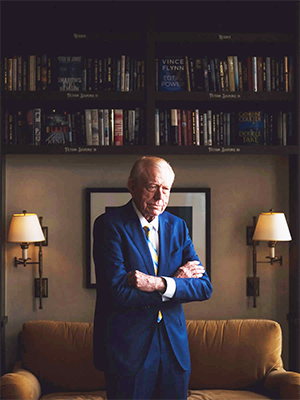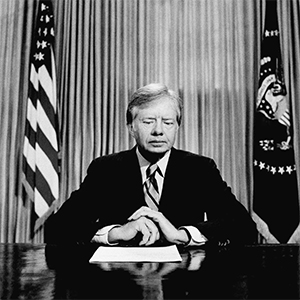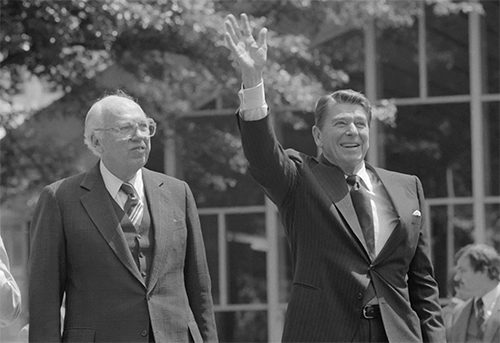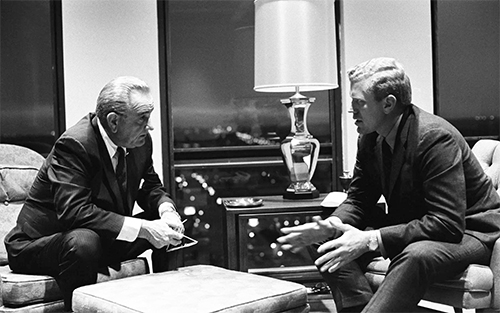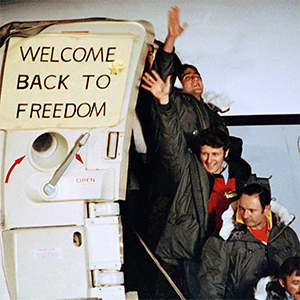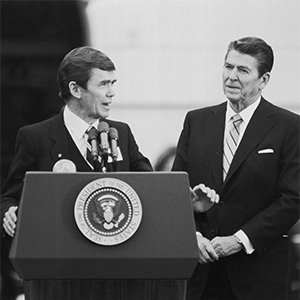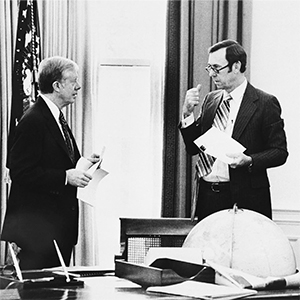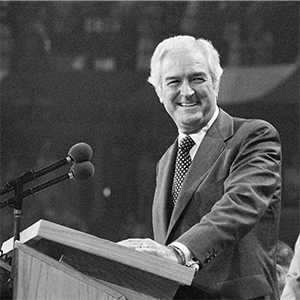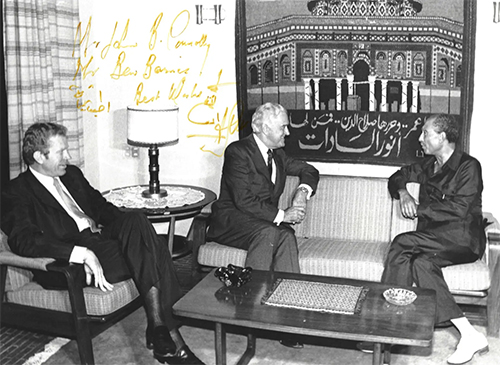by Thom Hartmann
Aug 21, 2022
NOTICE: THIS WORK MAY BE PROTECTED BY COPYRIGHT
YOU ARE REQUIRED TO READ THE COPYRIGHT NOTICE AT THIS LINK BEFORE YOU READ THE FOLLOWING WORK, THAT IS AVAILABLE SOLELY FOR PRIVATE STUDY, SCHOLARSHIP OR RESEARCH PURSUANT TO 17 U.S.C. SECTION 107 AND 108. IN THE EVENT THAT THE LIBRARY DETERMINES THAT UNLAWFUL COPYING OF THIS WORK HAS OCCURRED, THE LIBRARY HAS THE RIGHT TO BLOCK THE I.P. ADDRESS AT WHICH THE UNLAWFUL COPYING APPEARED TO HAVE OCCURRED. THANK YOU FOR RESPECTING THE RIGHTS OF COPYRIGHT OWNERS.
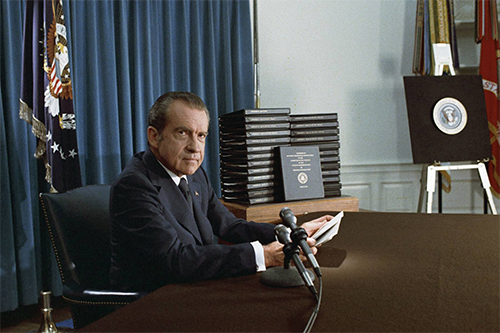
Dwight Eisenhower was arguably the last Republican president who believed in democracy, the rule of law, and that government should do what the people want.
From 1960 to today a series of leaders within the Republican Party have abandoned the democracy that American soldiers fought the Revolutionary War to secure, the Civil War to defend here at home, and World War II in Europe and the Pacific to defend around the world.
This has brought us a series of criminal Republican presidents and corrupt Republican Supreme Court justices, who’ve legalized political bribery while devastating voting and civil rights. None of this was a mistake or an accident, because none of these people truly believed in democracy.
This rejection of democracy and turn toward criminality and it’s logical end-point, fascism, started in the modern GOP with Richard Nixon.
He took millions in now-well-documented bribes both while Vice President to Eisenhower and as President (his VP, Spiro Agnew, resigned rather than go to prison for taking bribes). Nixon saw public service as a way to bathe himself in money, power, and adulation.
He didn’t care a bit about democracy.
As Lamar Waldron and I point out in detail in Legacy of Secrecy: The Long Shadow of the JFK Assassination, then-President Eisenhower’s then-Vice President, Richard Nixon, was getting beat up badly in the 1960 election by his opponent, Senator John F. Kennedy.
Most of it had to do with Cuba, where mobsters affiliated with Nixon for decades had just lost fortunes, millions and millions of dollars in annual revenue.
After the Cuban revolution of 1959, Castro came to the U.S. to seek military and economic aid for his island nation; Eisenhower left town, forcing Castro to meet instead with VP Nixon.
Given that Castro had just overthrown the dictator Batista, a friend of both Nixon and his mafia patrons, VP Nixon essentially blew off Castro, sending him into the welcoming arms of Nikita Khrushchev’s Soviet Union.
Thus, throughout the 1960 presidential race, Senator Kennedy pounded on Vice President Nixon for having “let Cuba go communist” on his watch. In response, Vice President Nixon put together a series of CIA and Mafia plots to assassinate Castro, timed to happen before the November 1960 election.
His hope was that if the Eisenhower/Nixon administration could be seen as having successfully overthrown Castro in 1960 it would de-fang JFK’s attacks and make Nixon — who Eisenhower had put in charge of Cuba policy — a national hero just in time for the election.
Nixon figured that would be enough to help him beat JFK at the polls. It was going to be his “October Surprise.” For Nixon democracy was just an inconvenience, an obstacle to be conquered. He never really believed in it.
You can imagine Nixon’s frustration when plot after plot was bungled or foiled and, by election day, Castro was still happily ensconced in the Havana presidential palace. This appears to be the moment Nixon decided that, if he had a chance to run for president again, he’d not just consider a CIA-Mafia plot but would embrace far more extreme measures.
Thus began the first Republican plot to commit full-out treason to win a presidential election.
It started in the summer of 1968, when President Lyndon Johnson was desperately trying to end the Vietnam war. It had turned into both a personal and political nightmare for him, and his vice president, Hubert Humphrey, was running for President in the election that year against a “reinvented” Richard Nixon.
Johnson spent most of late 1967 and early 1968 working back-channels to North and South Vietnam, and by the summer of 1968 had a tentative agreement from both for what promised to be a lasting peace deal they’d both sign that fall.
But Richard Nixon knew that if he could block that peace deal, it would kill VP Hubert Humphrey’s chances of winning the 1968 election. So, Nixon sent envoys from his campaign to talk to South Vietnamese leaders to encourage them not to attend upcoming peace talks in Paris.
The bribe was straightforward: Nixon promised South Vietnam’s corrupt politicians that he’d give them a richer deal when he was President than LBJ could give them then.
The FBI had been wiretapping these international communications and told LBJ about Nixon’s effort to prolong the Vietnam War. Thus, just three days before the 1968 election, President Johnson phoned the Republican Senate leader, Everett Dirksen, (you can listen to the entire conversation here):
President Johnson: “Some of our folks, including some of the old China lobby, are going to the Vietnamese embassy and saying please notify the [South Vietnamese] president that if he’ll hold out ’til November 2nd they could get a better deal. Now, I’m reading their hand. I don’t want to get this in the campaign. And they oughtn’t to be doin’ this, Everett. This is treason.”
Senator Dirksen: “I know.”
Those tapes were only released by the LBJ library in the past decade, and that’s Richard Nixon who Lyndon Johnson was accusing of treason.
At that point, for President Johnson, it was no longer about getting Humphrey elected. By then Nixon’s plan had already worked and Humphrey was way down in the polls because the war was ongoing.
Instead, Johnson was desperately trying to salvage the peace talks to stop the death and carnage as soon as possible. He literally couldn’t sleep.
In a phone call to Nixon himself just before the election, LBJ begged him to stop sabotaging the peace process, noting that he was almost certainly going to win the election and inherit the war anyway. Instead, Nixon publicly announced that LBJ’s efforts were “in shambles.”
But South Vietnam had taken Nixon’s deal and boycotted the peace talks, the war continued, and Nixon won the White House thanks to it.
An additional twenty-two thousand American soldiers, and an additional million-plus Vietnamese died because of Nixon’s 1968 treason, and he left it to Jerry Ford to end the war and evacuate the American soldiers.
Nixon appointed Harry Blackmun, Lewis Powell, and William Rehnquist to the Supreme Court, pushing it hard to the right and setting up the predecessors of Citizens United.
Rehnquist, we later learned, didn’t believe any more in democracy than did Nixon. He’d made his chops in the GOP with Operation Eagle Eye, standing outside polling places in Hispanic and Native American precincts challenging every voter who showed up there’s right to cast a ballot.
Nixon was never held to account for that treason, and when the LBJ library released the tapes and documentation long after his and LBJ’s deaths it was barely noticed by the American press.
Gerald Ford, who succeeded Nixon, was never elected to the White House (he was appointed to replace VP Spiro Agnew, after Agnew was indicted for decades of taking bribes), and thus would never have been President had it not been for Richard Nixon’s treason.
Ford pardoned Nixon and appointed John Paul Stevens to the Supreme Court. Next up was Ronald Reagan. He not only didn’t believe in democracy, he didn’t even believe in the American government.
He ridiculed public service like joining the military or getting a job with a government agency; he joked that there were no smart or competent people in government because if there had been, private industry would have already hired them away.
So, if you do not believe in democracy and you think the U.S. government is a joke, it’s not a big deal to betray your country to get the wealth, power, and fame that goes with the presidency.
During the Carter/Reagan election battle of 1980, then-President Carter had reached a deal with newly-elected Iranian President Abdolhassan Bani-Sadr to release the fifty-two hostages held by students at the American Embassy in Tehran.
Bani-Sadr was a moderate and, as he explained in an editorial for The Christian Science Monitor, successfully ran for President that summer on the popular position of releasing the hostages:
“I openly opposed the hostage-taking throughout the election campaign…. I won the election with over 76 percent of the vote…. Other candidates also were openly against hostage-taking, and overall, 96 percent of votes in that election were given to candidates who were against it [hostage-taking].”
Carter was confident that with Bani-Sadr’s help, he could end the embarrassing hostage crisis that had been a thorn in his political side ever since it began in November of 1979.
But behind Carter’s back, the Reagan campaign worked out a deal with the leader of Iran’s radical faction — Supreme Leader Ayatollah Khomeini — to keep the hostages in captivity until after the 1980 Presidential election. Khomeini needed spare parts for American weapons systems the Shah had purchased for Iran, and the Reagan campaign was happy to promise them.
This was the second act of treason by a Republican wanting to become president.
The Reagan campaign’s secret negotiations with Khomeini — the so-called 1980 “October Surprise” — sabotaged President Carter’s and Iranian President Bani-Sadr’s attempts to free the hostages. As President Bani-Sadr told The Christian Science Monitor in March of 2013:
“After arriving in France [in 1981], I told a BBC reporter that I had left Iran to expose the symbiotic relationship between Khomeinism and Reaganism.
“Ayatollah Khomeini and Ronald Reagan had organized a clandestine negotiation, later known as the ‘October Surprise,’ which prevented the attempts by myself and then-US President Jimmy Carter to free the hostages before the 1980 U.S. presidential election took place. The fact that they were not released tipped the results of the election in favor of Reagan.”
And Reagan’s treason — just like Nixon’s treason — worked perfectly, putting a third Republican president in office after Nixon and Ford. Neither Nixon nor Reagan believed in or held up democracy and the rule of law that underpins it as a value.
The Iran hostage crisis continued and torpedoed Jimmy Carter’s re-election hopes. And the same day Reagan took the oath of office — to the minute, as Reagan put his hand on the bible, by way of Iran’s acknowledging the deal — the American hostages in Iran were released.
Keeping his side of the deal, Reagan began selling the Iranians weapons and spare parts in 1981 and continued until he was busted for it in 1986, producing the so-called “Iran Contra” scandal.
Reagan appointed Sandra Day O’Connor, Antonin Scalia, and Anthony Kennedy to the Supreme Court, solidifying its rightwing tilt. We’d learn, in the Bush v Gore case in 2000 when they awarded the White House to the son of Reagan’s VP, that none of the three of them valued democracy.
And, like Nixon, Reagan was never held to account for the criminal and treasonous actions that brought him to office.
After Reagan, Bush senior was elected but, like Jerry Ford, Bush was only President because he’d served as Vice President under Reagan. And, of course, the naked racism of his Willie Horton ads helped keep him in office.
The criminal investigation into Iran/Contra came to a head with independent prosecutor Lawrence Walsh subpoenaing President George HW Bush after having already obtained convictions for Weinberger, Ollie North and others.
For the first time in history, the President of the United States could go to jail for criminal conspiracy. Bush was sweating.
Bush’s attorney general, Bill Barr, suggested he pardon all six co-conspirators — who could point a finger at Bush — to kill the investigation. Bush did it on Christmas Eve, hoping to avoid the news cycle because of the holiday.
Nonetheless, the screaming headline across the New York Times front page on December 25, 1992, said it all: “THE PARDONS: BUSH PARDONS 6 IN IRAN AFFAIR, ABORTING A WEINBERGER TRIAL; PROSECUTOR ASSAILS ‘COVER-UP’”
If the October Surprise hadn’t hoodwinked voters in 1980, you can bet Bush senior would never have been elected in 1988.
That is four illegitimate Republican presidents. President GHW Bush appointed Clarence Thomas and David Souter to the Supreme Court. We learned quickly that Thomas doesn’t value democracy. We now know his wife actively worked to subvert it, in fact.
Which brings us to George W. Bush, the man who was given the White House by five Republican-appointed justices on the Supreme Court.
In the Bush v. Gore Supreme Court decision in 2000 that stopped the Florida recount and thus handed George W. Bush the presidency, Justice Antonin Scalia (appointed by Bush’s father’s boss) wrote in his opinion:
“The counting of votes … does in my view threaten irreparable harm to petitioner [George W. Bush], and to the country, by casting a cloud upon what he [Bush] claims to be the legitimacy of his election.”
Apparently, denying the presidency to Al Gore, the guy who actually won the most votes in Florida and won the popular vote nationwide by over a half-million, did not constitute “irreparable harm” to Scalia or the media.
And apparently it was not important that Scalia’s son worked for a law firm that was defending George W. Bush before the high court (with no Scalia recusal).
Just like it wasn’t important that Justice Clarence Thomas’s wife worked on the Bush transition team — before the Supreme Court shut down the recount in Florida — and was busy accepting resumes from people who would serve in the Bush White House if her husband stopped the recount in Florida…which he did. There was no Thomas recusal, either.
None of them believed in democracy.
More than a year after the election a consortium of newspapers including The Washington Post, The New York Times, and USA Today did their own recount of the vote in Florida — manually counting every vote in a process that took almost a year — and concluded that Al Gore did indeed win the presidency in 2000.
As the November 12th, 2001 article in The New York Times read:
“If all the ballots had been reviewed under any of seven single standards and combined with the results of an examination of overvotes, Mr. Gore would have won.”
That little bit of info was slipped into the seventeenth paragraph of the Times story so that it would attract as little attention as possible because the 9/11 attacks had happened just weeks earlier and the publishers of the big newspapers feared that burdening Americans with the plain truth that George W. Bush lost the election would further hurt a nation already in crisis.
To compound the crime, Bush could only have gotten as close to Gore in the election as he did because his brother, Florida Governor Jeb Bush, had ordered his Secretary of State, Kathrine Harris, to purge at least 57,000 mostly-Black voters from the state’s voter rolls just before the election.
Tens of thousands of African Americans showed up to vote and were turned away from the polls in that election in Florida. BBC covered it extensively, although the American media didn’t seem interested.
So, for the third time in 4 decades, Republicans took the White House under illegitimate electoral circumstances. Even President Carter was shocked by the brazenness of that one. And Jeb Bush and the GOP were never held to account for that crime against democracy.*
President George W. Bush appointed Samuel Alito to the Supreme Court. Alito not only doesn’t believe in democracy, he also doesn’t believe in a woman’s right to get an abortion. He’d put a judge like himself between a woman and her doctor, with a police officer and a prison to enforce his decree.
Most recently, in 2016, Trump ally Kris Kobach and Republican Secretaries of State across the nation used Interstate Crosscheck to purge millions of legitimate voters — most people of color — from the voting rolls just in time for the Clinton/Trump election.
Meanwhile, Russian oligarchs and the Russian state, and possibly pro-Trump groups or nations in the Middle East, funded a widespread program to flood social media with pro-Trump, anti-Clinton messages from accounts posing as Americans, as documented by Robert Mueller’s investigation.
And on top of that, we learned in 2020 that Republican campaign data on the 2016 election, including which states needed a little help via phony influencers on Facebook and other social media, was not only given to Russian spy and oligarch Konstantin Kilimnik by Trump’s campaign manager Paul Manafort, but Kilimnik transferred it to Russian intelligence.
Even with all that treasonous help from Russia, Donald Trump still lost the national vote by nearly 3 million votes but came to power in 2016 through the electoral college, an artifact of the Founding era designed to keep slavery safe in colonial America.**
And then, in 2021, after losing to Joe Biden by 7 million votes, Trump mounted a seditious effort to overturn the election he’d just lost.
Trump didn’t believe in democracy in the least; he openly fawned over autocratic and fascistic states and their leaders.
After Mitch McConnell and Senate Republicans blocked President Obama’s nomination of Merrick Garland to the Supreme Court, President Donald Trump filled Garland’s spot with Neil Gorsuch, the son of Reagan’s disgraced former EPA administrator, Anne Gorsuch.
For reasons that are still unclear, shortly after Trump mentioned Kennedy’s son to him publicly at the Gorsuch ceremony, Justice Kennedy decided to resign. Whether it had anything to do with young Justin Kennedy — then working at Deutsche Bank and having signed off on over a billion dollars in corrupt loans to Trump — is still unknown, and Kennedy, still in good health, isn’t talking.
Kennedy was replaced by “Beerbong” Brett Kavanaugh, who had previously worked in the Bush White House. Republicans refused to turn over 95 percent of Kavanaugh’s papers to the Senate Judiciary Committee and jammed through his nomination after an epic meltdown on live television.
When Ruth Bader Ginsberg died just before the 2020 election, McConnell decided his “Garland Rule” was irrelevant and jammed through Trump’s nomination of Amy Coney Barrett in about six weeks; she was sworn in on October 27, 2020. When Democrats raised questions about Barrett’s role as a “Handmaid” (what she called herself) in a bizarre Catholic cult they were brushed aside.
Trump appointed Neil Gorsuch, Brett Kavanuagh, and Amy Coney Barrett to the Supreme Court. We now know none of the three of them believe in democracy, either.
Fifty-four years of Republican presidents using treason to achieve the White House (or inheriting it from one who did) has transformed America and dramatically weakened our democracy.
Those presidents have contributed their own damages to the rule of law and democracy in America, but their cynical Supreme Court appointments have arguably done the most lasting damage.
Republican appointees on the Court during this time have gutted the Civil Rights Act, the Voting Rights Act, union rights, the Affordable Care Act, and legalized Republican voter purges. They legalized the bribery of politicians by billionaires and corporations.
In short, they’ve done everything they can to weaken democracy and enforce minority rule in America.
One of their wives appears to have been involved in the January 6th attempted overthrow of our electoral process and thus our republic. Republican justices and judges openly flaunt the judicial code of ethics and routinely hand decisions to the GOP’s largest donors.
Today’s fascistic behavior by elected Republicans and their appointees on the courts has a long history, deeply rooted in multiple acts of treachery and treason. “Power at any cost” has been their slogan ever since Nixon’s attempts to assassinate Castro in 1960 to beat JFK in that year’s election.
Democracy? They laugh.
Which is why it’s time to call the Republican Party what it is: a criminal enterprise embracing fascism to hang onto power, a threat to our republic, and a danger to all life on Earth.
Thom Hartmann is a progressive political commentator and a best-selling author of more than two dozen books in the fields of psychiatry, ecology, and economics. This column is published with permission, and more of his daily articles can be found on The Hartmann Report.

